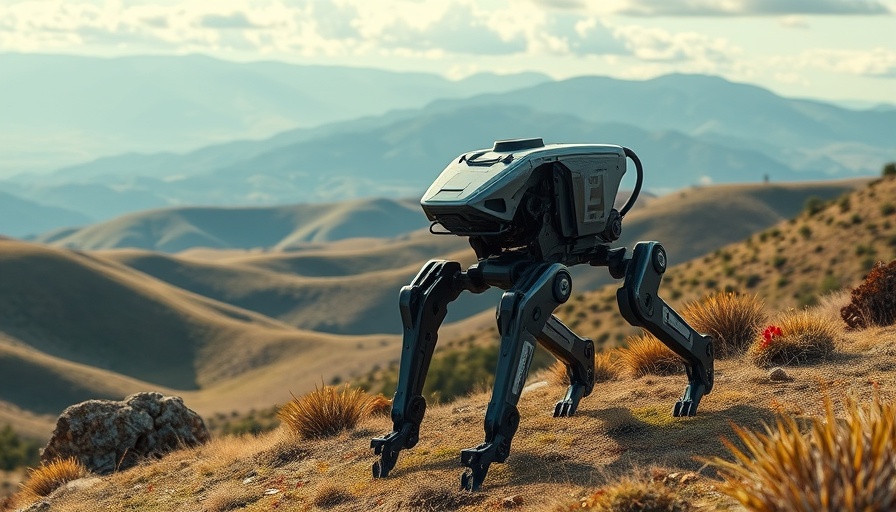
Asylon's Pioneering Approach to Robotic Security
In an era dominated by advancements in artificial intelligence and robotics, Philadelphia-based Asylon is making waves in facility security with its innovative robotic offerings. The recent $26 million Series B funding round, led by Insight Partners, highlights a growing confidence in robotics as a security solution. Asylon's journey began with their focus on drones, particularly notable for a drone equipped with a robotic arm capable of changing its batteries autonomously.
DroneDog: A Robotic Companion for Security
At the heart of Asylon's revolution is DroneDog, a modified version of the well-known Boston Dynamics robot dog, Spot. This robotic canine is not just an advanced gadget; it represents a tangible evolution in security technology. With the capacity to execute guard duties, the DroneDog integrates seamlessly with Asylon's command-and-control software known as Guardian. This allows for comprehensive security oversight, combining aerial drone patrols with ground surveillance.
The Rise in Demand for Security Solutions
Rising concerns over safety, particularly in high-profile cases such as the security breach leading to the tragic death of UnitedHealthcare CEO Brian Thompson, have spurred increased expenditure on enhanced security measures. Asylon’s robotic security as a service (RaaS) solution taps into this growing market. The company offers a compelling alternative to traditional security services, with comprehensive packages comparable to hiring a human bodyguard service, but with the added advantage of robotic efficiency.
The Shift Towards Automation in Security
Asylon's approach mirrors a broader trend in security, where automation is increasingly favored for efficiency and reliability. Autonomous robots like DroneDog are capable of patrolling hazardous environments, identifying threats, and responding to potential dangers without putting human lives at risk. Their ability to perform sophisticated tasks, such as detecting gas leaks or hazardous materials, showcases the practical applications of robotics in real-world scenarios.
Founders with a Vision
The origin story of Asylon is not just about technology, but also about an inspired journey through education and collaboration. The founders, Damon Henry, Adam Mohamed, and Brent McLaughlin, are MIT alumni who chose to combine their aerospace engineering backgrounds to innovate rather than dropping out to pursue typical tech startup paths. This dedication has allowed them to nurture their vision, leading to the creation of a multi-faceted security platform.
Conclusion: The Future of Robotic Security
Increasing interest in robotic solutions for security raises questions about the future of traditional security roles. Asylon's success with its series B funding not only reflects a promising outlook for drone and robotic technology in security but also marks a pivotal moment in the evolution of how we protect our spaces. With the tech world keenly observing these developments, it is evident that innovation in this space is just beginning.
 Add Row
Add Row  Add
Add 




Write A Comment